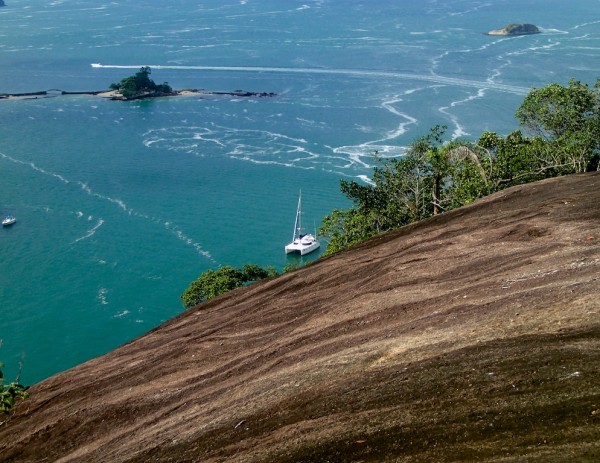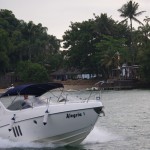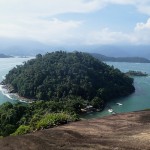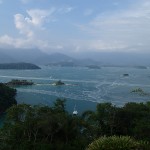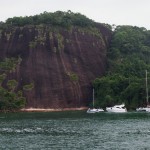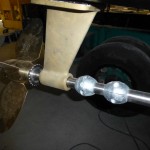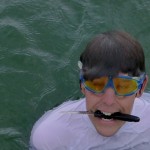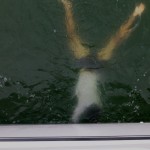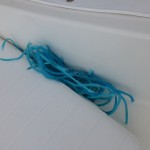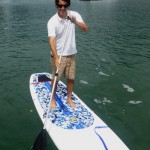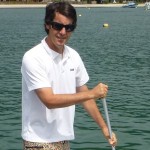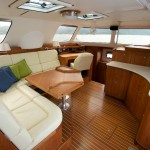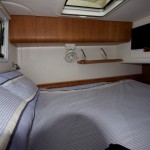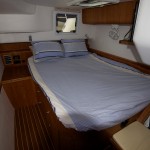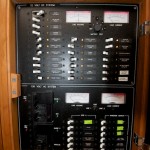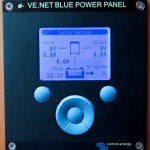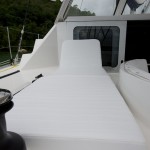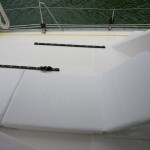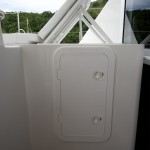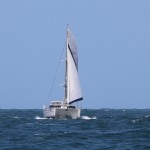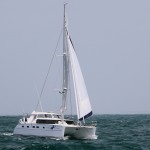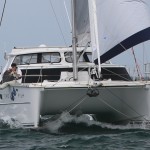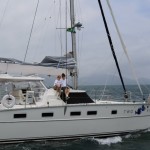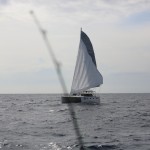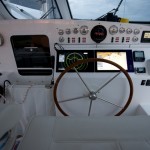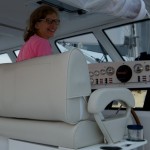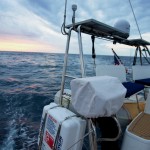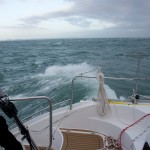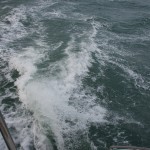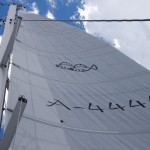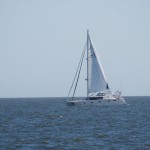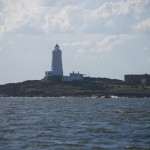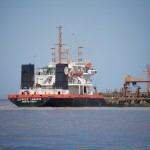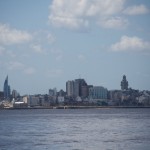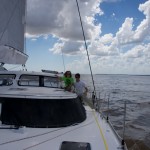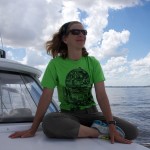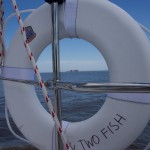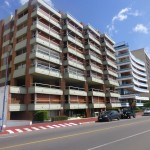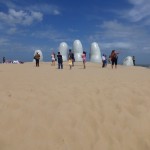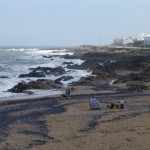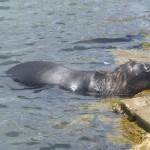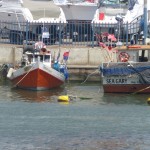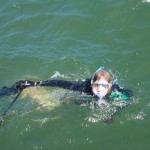STINKPOTS
Motorboats do not have the greatest reputation in the sailing world. It is a bit like cats and dogs. Gail quickly joined the fraternity of sailors on this point. We have suffered our largest and most disruptive waves from passing boats – much more violent than a 40 knot wind. The wind was 4 knots but stinkpots the size of homes were passing our exposed cove at 25 knots. While Gail was cooking dinner, I called the waves. 60 seconds … 30 seconds … 15 seconds. Gail used this time to brace the galley. It was a free salad toss but we were having salmon asian style.
Anchored motorboats tend to rock more than Two Fish when hit with wakes generated by their own kind. Then why don’t they slow down to reduce their wakes? Not in Sud America and probably not in el munro. Some of them are very polite and slow down immediately when we are abeam. Hmmm, I wonder if they have ever watched their wake come ashore. We are always amazed by how close they pass us by, even at sea. I think we are a bit of a novelty as catamarans are infrequent here. We have tried setting a course away but the other boat’s reaction is often to turn with us so they don’t miss the viewing.
FUNNY AND TRUE
One of the local stinkpots is “Thanks Mellisa”. Nice sentiment but it fell down when they chose to name their launch. The owners insisted on an English name that was related to the mother ship. So they came up with “Little Thanks Mellisa”. I am so tempted to tell Melissa she was of no use.
ILHA ITANHANGA
Every boat owner posts photos of their yacht in picturesque anchorages. One reason we post these photos is that we rarely see the boat from this perspective. Or, do we post them so our readers feel jealous? We traveled to a new anchorage which offered the full package. We went on a great hike to the top of the rocky cliffs, ate at a great beachside restaurant and watched Samba, the golden retriever swim out to boats begging for meat scraps from their afternoon bbq. Her well-developed technique was successful until the owner curtailed the mooching.
We anchored using our 33kg Rocna, which has been good to us under easy conditions. We have seen mud bottoms and light breezes that last few weeks. That being said, I do spend plenty of time making sure we are stuck to the bottom. We drop the anchor and chain and let the boat settle in to its position. Then we attach the bridle. We have the standard french bridle clip but some day we may swap it out for the huge Mantus clip. We then wait some more, checking our transits for potential drift. I then turn the Volvos back on for a power set with the engines in reverse. I work the power up slowly and stop at 1500 rpm. We also use the application Boat Monitor to warn us of anchor drag. I think it is the best on the market but needs a few tweaks. I very much like being able to see our tracks to visualize wind changes or anchor drags. (Tech note for Boat Monitor: I prefer telling it how far away the anchor is and direction rather than using the “drop” mode.)
MORE ON STINKPOTS
- Small stinkpot passes by with a friendly wave
- Plenty of place to explore
- 12 knot breeze and endless islands
- No shelter from motorboat wake
I have gone a bit over the top giving motorboats a hard time given that we use our dinghy a bunch. But many of the Brazilian motor boat crowd seem to come from a different world. 40 to 50 foot boats tend to have two professional crew. The owners can be seen on the flybridge while the pro crew steers from the inside. The marinas expect ourt-of-control boats when the owners do choose to drive. Dock crew come out immediately to tie arriving boats to a mooring ball. We routinely decline. I may have once heard some mumbling from Gail after that decision.
The Brazilian power boater loves their music. It is hard wired at 11. Lots of fun when playing pop music but seems off the mark for slow vocal ballads.
Brazilian boats have different safety rules than US boats. One difference is that many boats carry a flashing strobe light in addition to the normal navigation lights. Feels like the police are after you all the time. Two Fish has been chased by the police in Uruguay, so we prepared for another encounter with the cops until we saw the source.
Enough moaning. We are having a great time and looking forward to the New Year’s Eve party on the beach with all our new friends whether motor, wind or foot powered.
